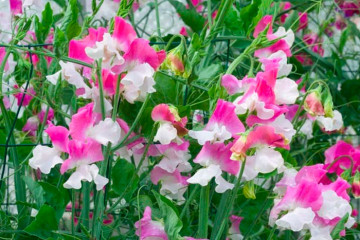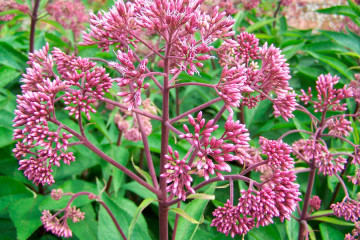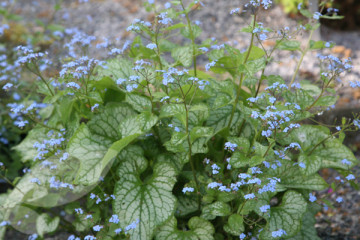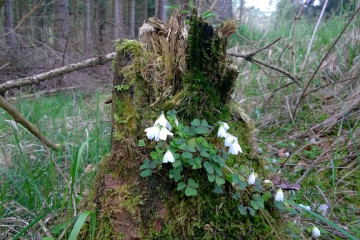Basilicum soap (Saponaria ocymoides)
Content:
Basil-leaved soapwort is a perennial herbaceous flowering plant from the Clove family. Refers to saponaria (in Latin saponaria, from the word "sapo" means soap). If you rub the root of the soapstone plant or another part of it with your hands, then a soapy coating will remain on your fingers, and foam will form when shaken with water. This is the action of saponin - a substance of which there is more than 30 percent in the roots of soapwort, it can work as a soap substitute.
The flower is unpretentious, easy to care for, attractive in appearance, therefore it is often used to decorate garden beds, alpine slides and other landscape design objects. How to grow a plant, how to care for it, is described in this article.
Brief description, origin
There are quite a lot of soapworms. In the garden, the soapwort saponaria can be seen on the lush, soft cushion of leaves and pinkish flowers. It grows to a height of 90 cm, but because of the creeping shoots it seems undersized, as if covering the ground with a soft light "blanket". It blooms very profusely in May, covered with loose inflorescences of small five-petalled flowers. During flowering, the stems grow well, therefore, the soapwort is trimmed by about a third closer to the middle of summer, so that the hats look neater.
For all the simplicity of the plant, the soap flower has many advantages that flower growers appreciate:
- almost any lighting suits him - he grows well in partial shade and in the sun;
- the plant is winter-hardy, it can also easily tolerate drought;
- grows quickly, has good seed germination;
- undemanding to the soil - the soapwort plant has sufficiently well-drained soil of any type.
In nature, it grows on rocky soil or in pine forests. Originally from the Alps, the mountainous regions of Spain, the soapwort is also widespread on the islands of Sardinia and Corsica. In Russia, it is found in the wild in the mountains and foothills of the Caucasus, although you can find it even in Siberia.
Popular varieties of Saponaria
There are more than 40 species in the genus Saponaria, but much less are adapted to decorative cultivation - about a dozen. Breeders are working on developing new varieties of this plant.
It is customary to distinguish medicinal and decorative soapwort. The decorative one includes basilicum soapwort.It is interesting in that it looks like pink foam, blooms together, for a long time. For the abundance of delicate small flowers, this soapwort is also called "moon dust". The varieties of basil-leaved soapwort include, for example, Camilla saponaria - a plant with multiple light pink flowers. In addition to her, there are several more varieties that are popular with gardeners.
Ordinary
The common soap plant is a perennial with narrow oval leaves and small pink or red-pink flowers. A separate plant is rather inconspicuous, but it looks very attractive in a flower bed.
White
White soapwort is one of the most beautiful, noble and rare plant species. The Betty Arnold variety differs in that it has a height of up to one meter. At the same time, the plant is strewn with extraordinary flowers of a snow-white color. Very nice and decorative.
Terry
Terry soapwort is a type of basil-leaved soapworm, which is distinguished by the doubleness of the flower and its slightly larger size. Terry saponaria are bred by breeders, they are not found in the wild.
Soddy
Soddy soapwort is a plant, which is widespread in nature mainly in the Pyrenees, grows on slopes of stones and looks rather rustic. The height of the bushes is no more than 15 cm, the flowers are pinkish, the leaves are lanceolate.
Soapy medicinal
Medicinal soap is a tall plant (up to 90 cm), rather unpretentious, grows everywhere in central Russia. It has a branched stem, densely covered with leaves. The flowers are fragrant, they look very impressive in the inflorescences, their color is pink.
Pink
The variety pink does not exist; it is customary to call the type of Olivan's soap dish pink soap. This is a hybrid bred by breeders for breeding specifically on alpine slides. The plant is short, creeping, has a cap of bright pink flowers of saturated color.
Others
Other plants from the group of decorative varieties have many shades. Soap boxes with shades of yellow and lilac look very beautiful.
Growing from seeds
Basically, the plant is grown in seedlings. On sale you can often find a soap box "Inspiration" or a soap box "Olivana", and "Moon dust" is also in demand.
Planting capacity and soil
For seedlings, seeds are sown in containers or other boxes equipped with drainage holes. The simplest soil is suitable, but it is well permeable to water. It can be sod land, better calcareous and fertilized.

Soapy girl looks good not only in the garden, but also as part of flower arrangements on the balcony
Seed preparation and sowing
Seeds can be wetted before planting to speed up germination. This plant is completely unpretentious, the seed grows well, sometimes you even have to fight self-sowing. After sowing, the land must be watered, covered with foil and wait for shoots.
How to care for seedlings
Seeds are planted in the ground, watered and covered with film or glass until the first shoots. As soon as the sprouts hatch, the shelter is removed, when the second true leaf appears, they dive in separate containers. Before planting in open ground, like other seedlings, it is hardened by taking it out into the street.
Timing
The timing of seedling emergence from seeds is 2-3 weeks. Seedlings are planted in the ground after the danger of recurrent frosts has passed. This is usually mid-May.
Landing in open ground
The soapwort has very viable good roots, so planting and caring for the soapbox in the open field is not difficult. A lump of earth with a sprout is simply rolled out of the pot and planted in a permanent place with gaps of 25 cm between plants.
Root features
The root of the plant contains substances that cause foam when rubbed in the hands. The above-ground part has the same property, but it lathers worse. In addition to surfactants, the roots also contain other components, including alkaloids. Therefore, the plant is used in some traditional medicine as a pain reliever.
Planting in a seedless way
Growing basilifolia soapwort from seeds is not the only way of reproduction. There is also grafting. For him, take a shoot, cut off the top and leave it to take root in wet sand, covered with a glass jar.
Features of care in the garden
Now about how the sapling planting and care are carried out.
Watering
Soap water is watered regularly, but not very abundantly.
Humidity
Spraying it to moisturize is optional. Only forest soapwort requires relatively higher humidity, other species tolerate normal summer quite well.
Priming
The plant does not tolerate excessive waterlogging of the soil, therefore the land must be light, drained. If there is groundwater nearby, then it is better to plant flowers in a high bed.
Top dressing
Since the plant as a whole is unpretentious, it is not necessary to take special care of feeding. It is enough to apply phosphorus fertilizer or bone meal once a season when planting.
When and how it blooms
Types of flowers
With all the similarity of the common signs of soapworms of different species, flowering may differ. There are plants with the usual five-petal flowers, and there are double chic representatives of the family. There are flowers reaching a diameter of 4 cm, most of them still have flowers of a rather modest appearance and size.
Flower shapes
The flowers of the soapwort can be of different colors, the shape of the inflorescences is similar in all species.
Flowering period
The basil-leaved soapwort blooms in two waves, almost all summer delighting the gardener with a lush flower cap.

Some plant varieties have a particularly beautiful sophisticated "appearance", such as the Rosea Glen hybrid
Changes in care during flowering
In order for the flowering to be abundant, lush, long, it is recommended to feed the plant with complex fertilizers during this period.
Transplant after purchase and during reproduction
The plant takes root well when transplanting from a container into the soil, when dividing a bush and rooting a cuttings. It is only important that the soil is light, loose, without stagnant water.
Possible growing problems
The perennial is quite resistant to garden pests and plant diseases. He is practically not affected by the classic diseases inherent in horticultural crops. Still, it is worth paying attention to some points.
Leaf problems
Leaves can be affected by a fungus, which becomes noticeable by the characteristic darkening of the leaves or their covering with brown spots. Usually, excessive waterlogging of the soil becomes the cause of the disease. For the same reason, soapworms suffer from root rot. In case of damage, the plant must be cleaned of diseased leaves, if the underground part is also damaged, then remove it completely.
Pests
The garden scoop butterfly can cause great harm. Caterpillars hatching from butterfly eggs can damage the plant to a large extent. They gnaw the shoots, and the plant dies. It is recommended to fight the pest with special protective preparations, manual collection of larvae and caterpillars helps.
Diseases
If black spots appear on the leaves, you need to cut out the affected areas.If the affected area is large, remove the entire plant and burn. Treat the rest with fungicides.
Signs of improper care
If not properly watered, the plant can lock up and die. Excessive drought is also harmful. Finally, the lack of weeding can lead to the fact that weeds will clog the entire cultivated part of the flower bed. Otherwise, there should be no problems.
Saponaria is an interesting plant for the gardener that does not require significant physical costs in care, is unpretentious and grows on any soil. Together with other ground cover plants, it helps to decorate the garden and make the site more attractive.


















